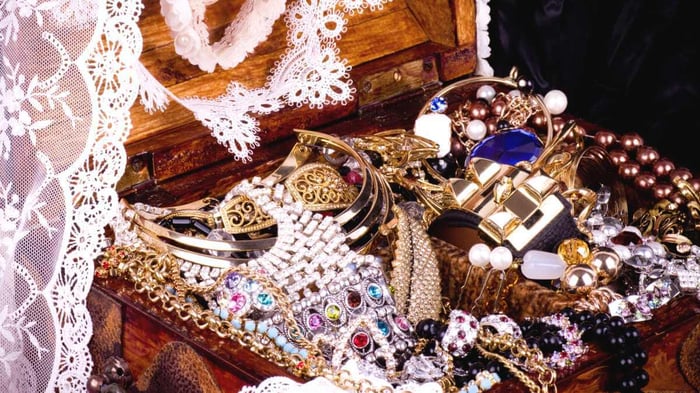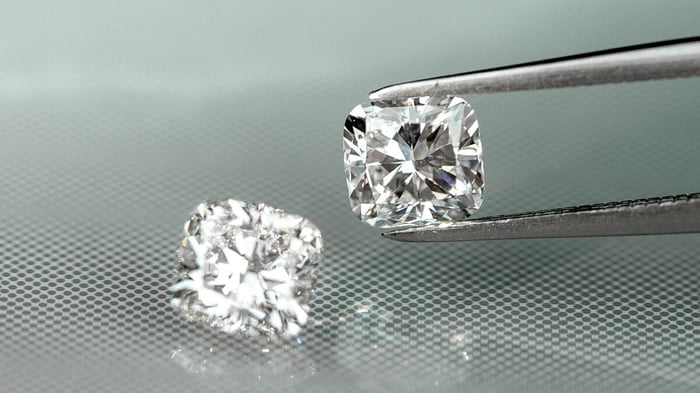The History Of Diamonds And Diamond Cutting
The history of diamonds is rich in myths and folklore, in addition to physical facts and records. Therefore the history of diamonds can vary widely depending on the sources used. Diamond history is also rich in records and material facts. Diamond history is rich with mythological stories, such as one where snakes guarded a place full of diamonds. The history of diamonds has enthralled people with the romance and beauty surrounding our most valuable gemstones, diamonds.
The Infancy Of The Diamond Industry
Around three thousand years ago, the history of diamonds was first documented in the region today known as India. If diamonds were discovered or used before this time. In that case, there is no record of it in writing form here at our disposal. In this day and age, diamonds were primarily utilised for two objectives, which are very different from why people still love diamonds now. Diamonds were used as talismans to ward off evil spirits and to grant protection during battle. In addition, diamonds were highly esteemed for their ability to reflect light, contributing to their overall attractiveness.
The Dark Ages In The History Of Diamonds
During the middle ages, diamonds began to be used in medicine for the first time in human history. This occurred during the dark ages. It is reported that St. Hildegarde wrote a tale to heal wounds and cure ailments in which she told the sick to make the sign of the cross while holding a diamond in their hand. This was said to be a remedy for a variety of conditions. In the history of diamonds, there are accounts of individuals who ate diamonds in the misguided belief that doing so would somehow restore their health.
Certified Diamond Solitaire Engagement Ring 0.90ct E/VS Quality 18k White Gold
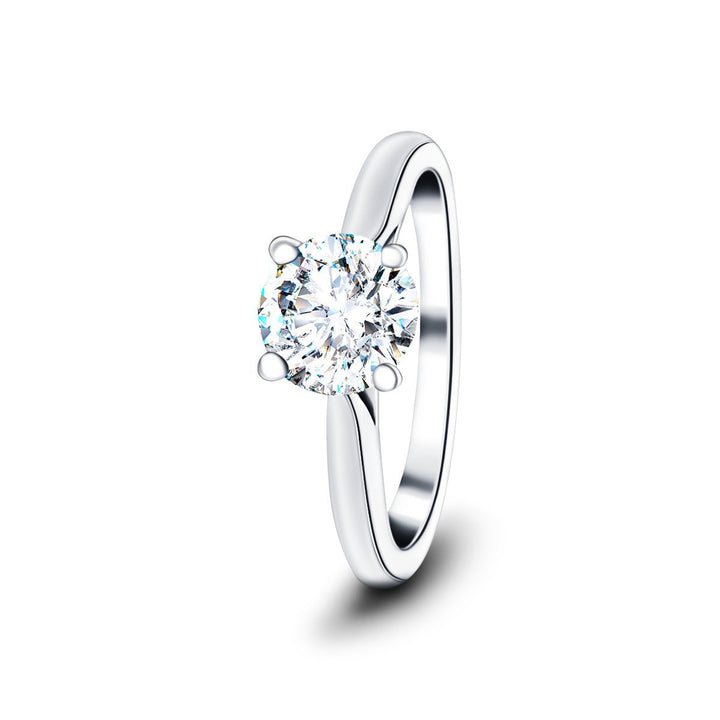
£3,427.00
£5,757.00
Let your proposal come alive with the brilliance of the hand-cut diamond and the shimmer of 18k white gold. A diamond solitaire ring's ageless sophistication will be an eternal reminder of love and stylish finishing touch to any ensemble. Hand-crafted… read more
The Diamond Industry During The Middle Ages
The beginning of diamonds' rise to prominence in society may be traced back to the middle ages. During this era in diamond history, many of the most renowned diamonds, such as the Blue Hope and the Mountain of Light, were found. Both of these diamonds were discovered in India. India continues to be one of the best places in the world for polishing diamonds at the present moment.
A change occurred in the history of diamonds during the middle ages. Before this time, diamonds were valued primarily on the mythological qualities associated with them; however, during this time, diamonds came to be appreciated more for their overall worth.
As more people became aware of the incredible value of diamonds, mine workers began stealing diamonds from the mines in which they worked. Mine owners started spreading rumours that diamonds were poisonous to discourage their employees from swallowing diamonds to circumvent detection while smuggling them out of the mines.
The availability of diamonds in India was decreasing, and the country could not satisfy the demand from diamond purchasers. In addition, at this time in diamond history, people desired diamonds more than they had ever done during any other period. This was mainly because people now understood the power and value of these rare and beautiful gemstones.
The discovery of diamonds in South Africa close to the Orange River marked the beginning of the largest diamond rush in the history of diamonds. This new output finally satisfied the desires of people who wanted gems for themselves.
Vintage 2.20ct Emerald & 0.90ct Diamond Drop Necklace White Gold
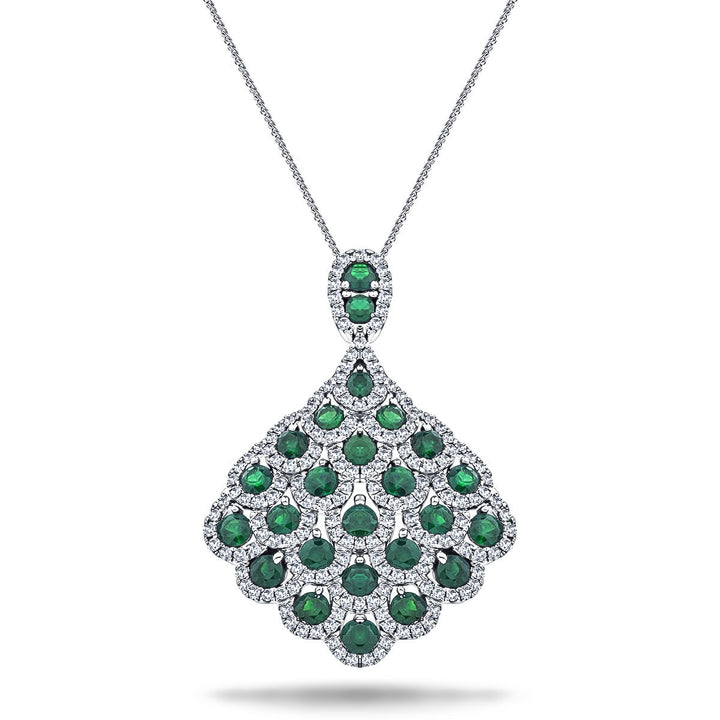
£2,827.00
£5,107.00
This stunning necklace features a vintage look with a subtle white gold design. Cast from 18k gold, this piece has a classy vintage feel that will be a favourite for any occasion. The classic design is a popular option for… read more
Diamonds In More Recent Times
The story of diamonds began to make its way into eastern Australia around the middle of the nineteenth century. The legitimacy of Australia's position as a diamond producer was established in the late 1970s. Geologists also discovered the Argyle pipe in the neighbourhood of Lake Argyle in 1979. Since then, Argyle has grown to become the most prolific diamond producer in the world and throughout the entire history of diamonds. Argyle is responsible for producing more than one-third of the total volume of diamonds mined each year.
Diamond Cutting And Polishing
Alongside the history of diamonds and the changing ways people value diamonds runs the development of techniques for polishing and cutting diamonds. This brief overview does not cover all the developments – that's a book or two of reading!
Bear in mind that a rough diamond as it is dug from the ground is an unprepossessing grey pebble. The beauty of a diamond does not become apparent until it has been cut and polished.
The history of diamond cutting and polishing is the story of how the beauty of diamonds was released over centuries as craftsmen working with diamonds learned to unleash the beauty of the diamond.
At first, diamonds were sought out as sacred objects with magical powers. By the 11th century, diamonds were starting to be used in jewellery, but still in an uncut form.
During the 14th century, rudimentary diamond cutting techniques were developed; however, this was more of a process of giving the diamond a shine through superficial polishing. Jewellery made with these stones would not be recognisable today!
Point Cut Diamonds
The first proper cutting technique used metal chisels to cleave diamonds into a point shape, today called the point cut. Developed in India, this technique created crude facets with the shape of a pyramid with a point at the top. This shape retained almost all of the original shape of the diamond crystal, making it practical to cut with the tools available. This resulting jewel could be set into rings and reflected some light, the first time that diamonds had been given any sparkle, albeit not very much!
The point cut was the standard cut for hundreds of years.
The Table Cut
The table cut was the first successful attempt to create true facets in diamonds. The table cut had a flat top, hence the name. The diamond had bevelled facets around the table to catch and reflect light. This shape was first seen in the 16th century but was mainly found from the 17th to early 18th centuries. This shape resulted from the discovery in the 15th century that diamond dust could be used to cut and polish diamond crystals. This enabled craftsmen to reliably cut and polish diamond facets to catch and reflect light for the first time.
The Rose Cut
During the 16th century, jewellers created tools using diamond dust that enabled them to create facets in diamonds. Diamond cutters quickly learned new techniques for working with the latest tools and knowledge about using diamonds to work on diamonds. This led to the development of the rose cut. The rose cut shape has 24 facets.
The effect from a rose cut diamond is a diffused, soft light. This shape does not sparkle with a bright light. While this is partly due to the low number of facets, in large part, the visual effect comes from using a flat bottom to the diamond combined with a domed profile above the girdle.
Channel Set Diamond Hoop Earrings 0.50ct G/SI 18k Yellow Gold 20.0mm

£967.00
£1,547.00
Alluring round-cut, ethically sourced, G/SI diamonds take these diamond hoop earrings from simple to simply stunning and will make the perfect gift to celebrate any special occasion. They are perfect for everyday wear. These classic channel-set diamond 20.0mm diameter hoop… read more
Brilliant Cut Diamonds
The rose cut fell out of favour in the 19th century as more brilliant diamond shapes were developed, particularly the brilliant cut, which is today the most popular diamond style.
Brilliant cut diamonds a cut with many facets angled in such a way as to maximise the brilliance and sparkle of a diamond. They are exciting to look at, so they became the most popular style of diamond.
The development of brilliant cut diamonds began in the 17th century but only became popular in the 18th century. The development of these highly faceted diamonds was possible only due to the improvement of cutting and polishing techniques as well as the use of mathematics to design the shapes taking into account new knowledge about the properties of light.
Brilliant cut diamonds were expensive to create because of the number of facets and the need for good symmetry to maximise the sparkle of the diamond. However, such cuts became relatively less costly over time as techniques and tools improved. This limited their availability to those who were very wealthy.
Diamonds Today
The most commonly seen brilliant cut is the round brilliant, the 'classic' diamond shape used in around 70% of all diamond jewellery. However, there are other brilliant cut shapes such as cushion cut, old mine, marquise, oval, princess and more.
Some buyers still prefer a softer visual effect from shapes such as the emerald cut. However, even these diamonds would still look impossibly brilliant to diamond lovers just a couple of hundred years ago!
Certified Shoulder Set Diamond Engagement Ring 0.70ct G/SI in Platinum
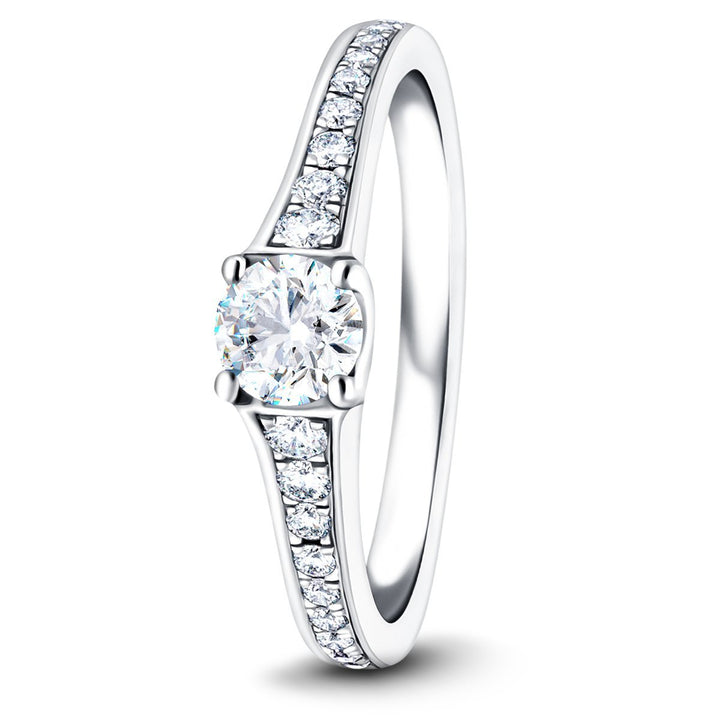
£1,857.00
£3,337.00
This beautiful, genuine, and handcrafted diamond ring is the perfect way to express your love. The ring features a clear, brilliant, and G/SI diamond that is set in a genuine platinum band. Whichever style of ring she chooses, it's sure… read more
All Diamond Have it All!
Not every piece of diamond jewellery needs to have brilliant round diamonds! You can choose the type of precious metal and style of the setting, and the shape of the diamond that you like. You will find jewellery in almost every modern diamond shape at All Diamond.
All of our fine diamond jewellery is designed and handcrafted right here in Britain. We back our craftsmen's work with a lifetime workmanship guarantee.
Please take a moment or two to browse our jewellery collections, from rings and earrings to necklaces, bracelets and bangles. We are confident that you will see exciting designs that inspire and delight you!
